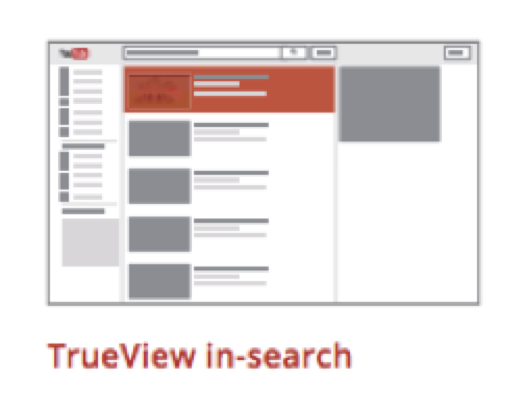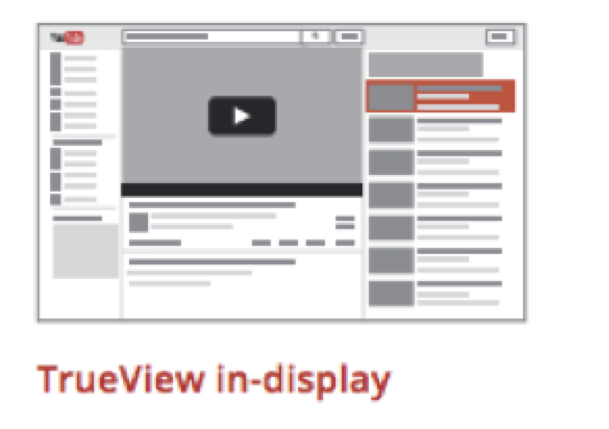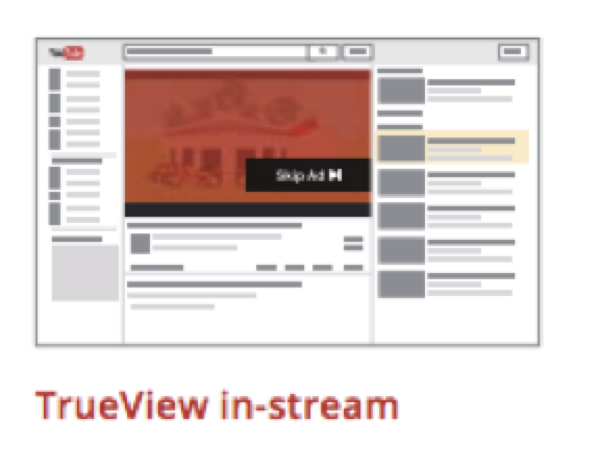These days advertising can be tricky. When it comes in the form of a pop-up or some other unsolicited form, people are likely to ignore it or just be annoyed, even if they would benefit from your services. So what if you could reach out to them with an advertisement video while they are already searching for a video they want to see? This is the goal of the YouTube “True View” advertising platform. YouTube’s TrueView was founded in 2005 so it’s been around for a while with steady improvements being made over the course of the last 10 years. As the platform stands now, it is likely to attract more small business advertisers over the next year (mostly because of features and pricing), so the sooner you can learn if it’s right for you the better.
How TrueView it Works
There are a few things that I really like about YouTube’s True View and that can really benefit small businesses if done right:
(1) Make sure you get the view. You only pay for the advertisement when someone chooses to watch it. This means if they search for a video and then realize it has an ad and they don’t want to follow through with watching it, you do not have to pay for that view. This assures that you are only paying for videos that people actually watch.
(2) Price is up to you. You get to choose how much you pay for a view. This is going to change when and where your video plays, and also the audience that you want to have, but it is completely up to you, unlike most rigid advertisement platforms.
(3) The platform it opt-in. One of the major benefits is that the length of you advertisement does not really matter (within reason) so you are able to more creative presentations and experiment with longer promotional videos to communicate all that you want to in an advertisement, this can be particularly valuable for smaller businesses where people do not know about the product.
(4) A choice. There are three types of True View advertising, all of which are outlined in the next section.
For even more information, check out the promotional video that YouTube put together for the platform below that shows how it works:
Three Types of True View
As discussed above, there are three types of TrueView ads that you can use:
True View In-Search Ads
With In-search ads, videos appear as advertisements on the YouTube search page. As you will likely notice, these are often for major corporation or entertainment promotions. Viewers are able to see your video advertisements once they click on YouTube’s homepage. It’s important that you about this option in general; however it definitely is not the small business’s best option, which we’ll discuss in the next section.
Pricing: While it is not the best option for small business, you still pay only when viewers click on your video ad and begin watching—which is consistent throughout the True View platform.
True View In-Display Ads
If you search for a video on YouTube, once you pull it up you will notice that in the view of the page there are advertisements along the sides of the video. These are considered “in-display” ads. Viewers will see your video ad either above or next to YouTube’s regular search results. While this is not my favorite option, it is definitely something to look into if you are just starting to advertise on YouTube and kind of want to see the interest level of your videos more generally.
Pricing: Again, you only pay when viewers click on your video ad and begin watching your video. This is another good reason to test the waters with TrueView in-display first—you may not loose all that much in the process and if you like it you can move on to the third option where you advertisement actually plays in the video.
True View In-Stream
This is definitely the most popular form of TrueView advertising, and my recommendation for established small businesses. With TrueView in-stream ads, your video will play as a pre-, mid-, or post-roll on videos found on YouTube of all lengths. Your ad will generally play for 5 seconds, then viewers choose to skip or watch the rest if they are interested in your product or service.
Pricing: Keeping with the idea of only paying when people watch your ad, with in-stream, you only when viewers watch 30 seconds of the ad, or to completion if the ad is under 30 seconds.
Why this advertising platform?
If the variety of options and information thus far has not swayed you, below points out some other features of YouTube advertising that is unique and definitely worth considering as we create marketing strategies and launch into the New Year:
- Targeting Options. One of the things about YouTube advertising that makes a lost of sense is that you have so many options for the audience you want to target. This means you can gain an audience based on people that would be genuinely interested in your business by selecting viewers based on: content/topic, interest category, contextual, demographic or geographic parameters.
- Engagement. By using this advertising platform you gain access to free “companion banners“ to generate views for other videos on your YouTube channel or drive traffic to your website. This means that it is not the ad alone that people get to see, but they also have the opportunity to make it to your website or channel to see even more of what you have to offer. This is one of the best ways to engage a new audience.
- Remarketing. It is hard not to love the remarketing feature. With this platform you can build remarketing lists of people who viewed your TrueView ads on YouTube or the Google Display Network. While this feature has not been launched for mobile, it is still a great way to reach out to the same audience in order to maximize your marketing results.
- Some Statistics. Here are some statistics directly from YouTube’s True Video ad fact sheet: “15–45% TrueView in-stream viewers choose not to skip an ad on average 15-45% of the time. 3–4x Advertisers have seen click-through rates of up to 4% with TrueView in-stream ads (3-4x higher than other video ad formats)”.
- Optimize. You can always do something to optimize your video campaign if you feel like you are not getting the results you want. By adjusting your campaigns for a higher view rate or evaluating and adjusting things like CPV (click-per-view) that may not be at the level that you want.
- AdWords. Because of the platform’s close connection to Google and AdWords specifically, you can use this advertising to boost your SEO and increase your website traffic as well. Visit our SEO marketing agency for more information.
The Takeaway
Google purchased the YouTube platform in 2006, and since then, all things Google have improved this platform for advertisers. It has been somewhat of a slow process, but I think this article highlights the major benefits for advertising on YouTube, especially as a small business.
Do you have experience with YouTube True View? Let us know in the comments section below, we would love to hear from you.




